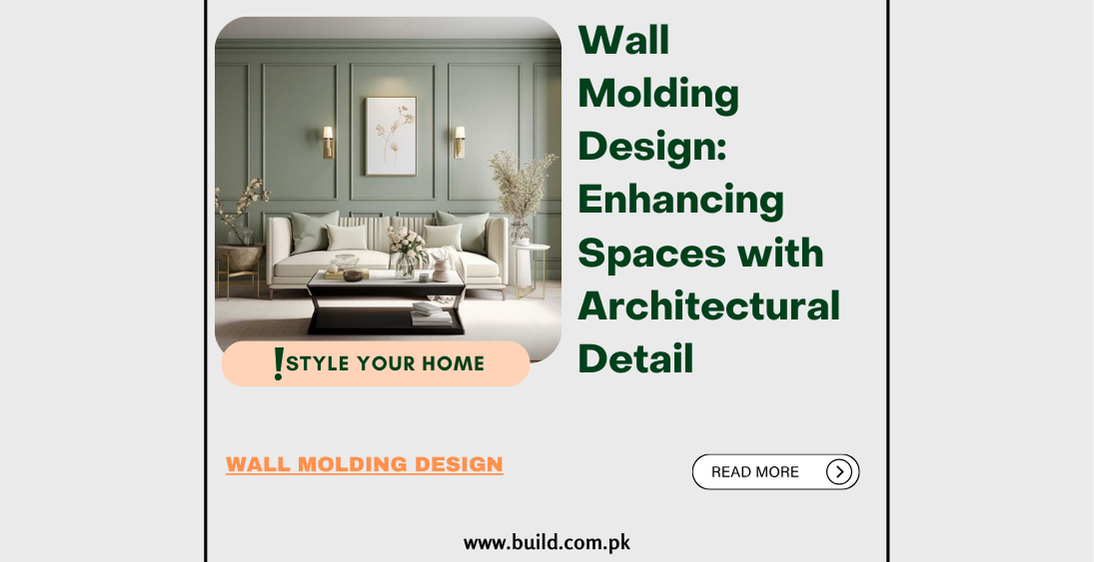Wall Molding Design: Enhancing Spaces with Architectural Detail

Introduction:
Wall
moldings serve as decorative accents that add depth, texture, and visual
interest to interior spaces. From traditional to contemporary styles, these
architectural elements have the power to transform plain walls into
sophisticated canvases. This guide delves into the types, styles, installation
techniques, and creative uses of wall moldings, highlighting their versatility
in enhancing residential and commercial interiors.
Types of Wall Moldings
Wall
moldings encompass a variety of profiles and configurations, each contributing
unique characteristics to a room's design:
Crown Molding:
Installed where walls meet the ceiling, crown molding adds elegance
and a finished look to a room. It comes in various sizes and profiles, from
simple to intricate designs, and can be made from wood, plaster, or composite
materials.
Baseboard Molding:
Located at the bottom of walls where they meet the floor, baseboard
molding serves both practical and aesthetic purposes. It covers the joint
between the wall and floor, protects walls from kicks and scuffs, and adds a
visual foundation to a room.
Chair Rail Molding:
Positioned horizontally on walls at chair height, chair rail
molding helps protect walls from furniture and adds a decorative touch. It also
visually divides a wall, allowing for different paint colors or wallpapers
above and below the rail.
Panel Molding:
Used to create geometric or framed patterns on walls, panel molding
consists of thin strips that form rectangles or squares. It adds depth and
architectural interest to plain walls, particularly in formal dining rooms,
libraries, or entryways.
Picture Rail Molding:
Installed horizontally on walls near the ceiling, picture rail
molding was historically used to hang artwork without damaging walls. It adds a
decorative element and allows for flexible artwork placement without nails or
hooks.
Cornice Molding:
Found at the junction of walls and ceilings, cornice molding is
typically more elaborate and detailed than crown molding. It often features
intricate patterns or motifs and is commonly used in grand or period-style
interiors.
Styles and Design Considerations
Wall
moldings can be adapted to various interior design styles, from classic to
contemporary:
Traditional:
Ornate crown moldings, panel moldings with raised panels, and detailed
baseboards are characteristic of traditional interiors, adding a sense of
richness and heritage.
Modern:
Clean lines, minimal profiles, and geometric patterns define modern wall
molding design. In contemporary spaces, moldings are often used sparingly to
create subtle visual interest without overwhelming the room.
Transitional:
Combining elements of both traditional and modern styles, transitional wall
moldings feature simplified profiles with occasional decorative accents, offering
a timeless appeal that blends old-world charm with contemporary aesthetics.
Installation Methods
Installing
wall moldings requires precision and careful planning to achieve professional
results:
- Measurement and Planning: Begin by measuring the walls and determining the layout of the moldings. Use a level and pencil to mark guidelines for accurate placement.
- Cutting and Fitting: Use a miter saw to cut moldings at precise angles for corners and joints. Dry-fit pieces before securing them to ensure proper alignment.
- Attachment: Apply construction adhesive to the back of each molding piece and secure it to the wall using finishing nails or a pneumatic nail gun. Use a nail set to countersink nails below the surface.
- Finishing
Touches: Fill nail holes and gaps with wood putty or caulk. Sand the surfaces
smooth before painting or staining to match the room's decor.
Creative Applications
Beyond
traditional uses, wall moldings offer creative opportunities to personalize and
elevate interior spaces:
- Accent Walls: Create a focal point by applying panel moldings to one wall and painting within the frames for a sophisticated, tailored look.
- Ceiling Treatments: Install crown moldings with integrated LED lighting to illuminate ceilings and add ambient light to rooms.
- Door and Window Casings: Frame doors and windows with trim moldings to enhance architectural cohesion and visual continuity throughout a space.
- Built-In
Shelving: Use panel moldings to create recessed areas for built-in shelving or
cabinetry, adding functional storage with a decorative flair.
Conclusion:
Wall molding design offers a versatile way to enhance interior spaces with architectural detail and decorative sophistication. Whether embracing traditional elegance or modern simplicity, the strategic use of crown moldings, baseboards, panel moldings, and more can transform ordinary walls into extraordinary showcases of style and craftsmanship. By understanding the types, styles, installation techniques, and creative applications of wall moldings, homeowners and designers alike can confidently incorporate these timeless elements to create personalized, visually captivating interiors.









